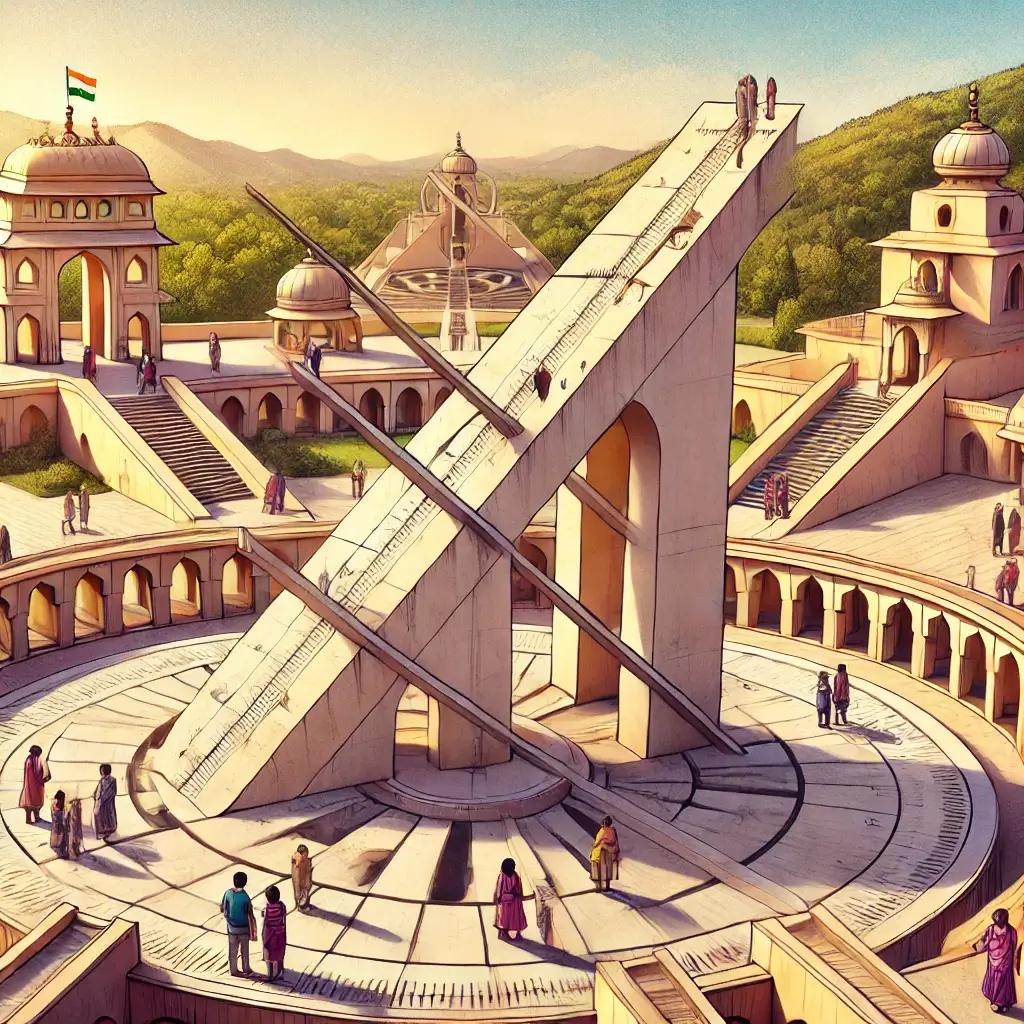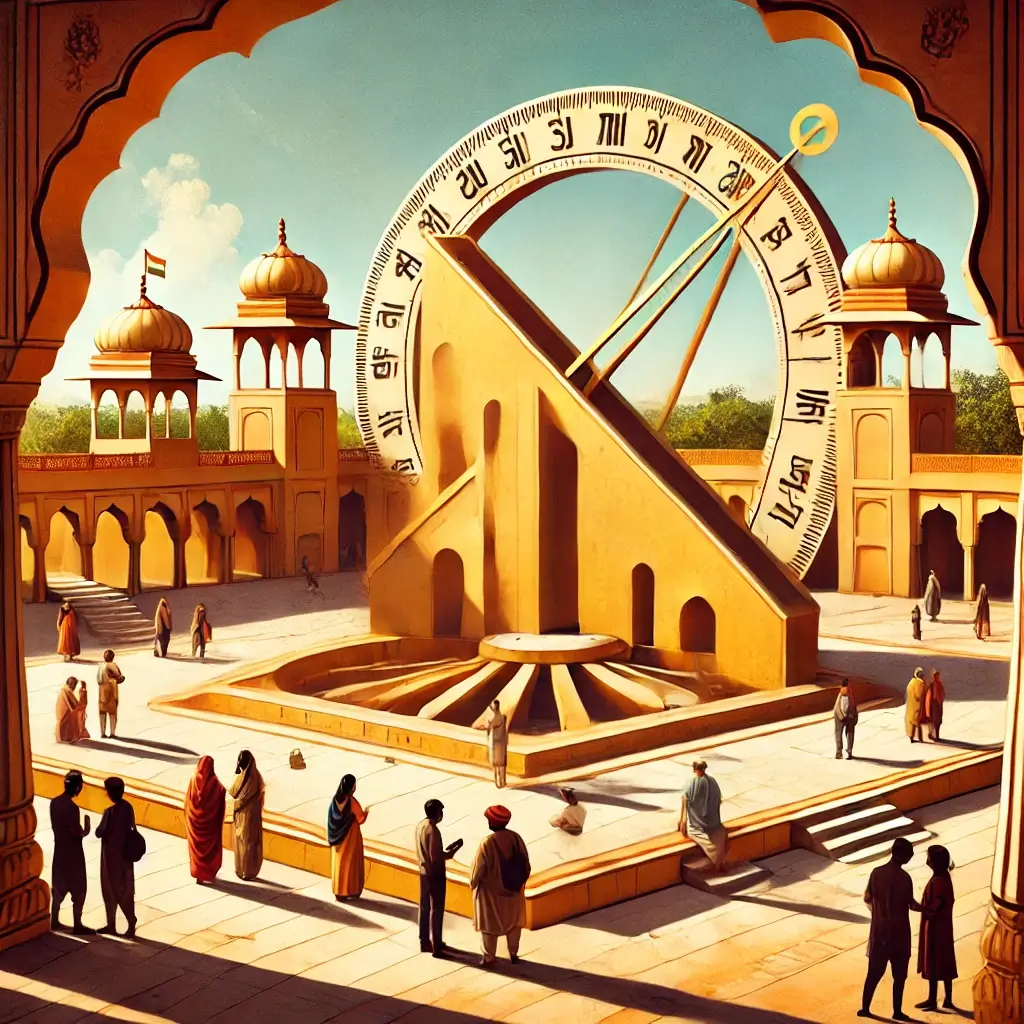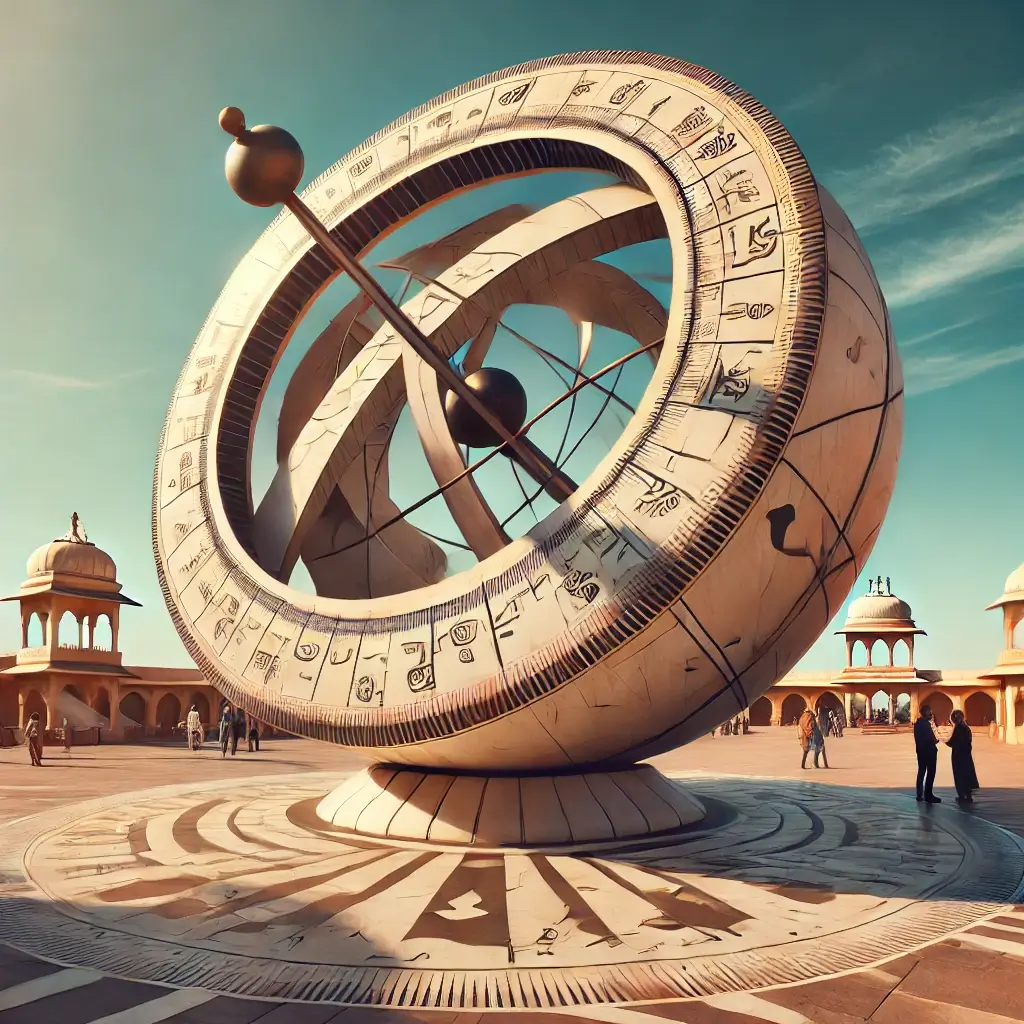🌌Jantar Mantar Jaipur: The Complete Guide to India’s Ancient Astronomical Observatory
✅ Introduction:
Jantar Mantar is a collection of architectural astronomical instruments built by Maharaja Jai Singh II of Jaipur in the early 18th century. It is one of the most significant and advanced observatories of its time. The term “Jantar Mantar” is derived from two Sanskrit words:✅ Introduction:
Jantar Mantar in Jaipur, Rajasthan, is one of the most significant astronomical observatories in the world. Built in the early 18th century by Maharaja Jai Singh II, this scientific marvel is famous for its massive geometric instruments, which were designed to observe celestial bodies with the naked eye. It is the largest and best-preserved of the five Jantar Mantar observatories built in India.
Designated as a UNESCO World Heritage Site in 2010, Jantar Mantar attracts thousands of visitors and astronomy enthusiasts every year. The observatory comprises 19 astronomical instruments, including the world’s largest stone sundial, which can measure time with an accuracy of two seconds.
In this article, we will explore Jantar Mantar’s history, architecture, instruments, scientific significance, and visitor information, offering a detailed and SEO-friendly guide.

🌟 History and Origin of Jantar Mantar Jaipur
Jantar Mantar was commissioned by Maharaja Jai Singh II, the ruler of Jaipur, in 1728. The construction took nearly seven years to complete, and it was finished by 1734.
Why was it built?
- Maharaja Jai Singh II was a keen astronomer and mathematician.
- During his reign, he identified inaccuracies in the astronomical tables based on traditional Hindu and Islamic systems.
- He aimed to improve astronomical observations by constructing large-scale instruments for greater accuracy.
- Inspired by Islamic, Persian, and European astronomical techniques, he combined their principles to design the observatory.
Purpose of Jantar Mantar:
- To measure time with precision.
- To track the movements of celestial bodies.
- To predict eclipses and solstices.
- To determine the altitude and azimuth of celestial objects.
- To study the motion of planets and stars.
🔥 Architectural Marvel of Jantar Mantar
Jantar Mantar is a stunning example of scientific architecture from the 18th century.
- The observatory is spread across 18,700 square meters.
- The instruments are constructed from locally sourced stone, marble, and brass.
- The structures were engineered for precision and designed to withstand harsh weather conditions.
🔧 Key Instruments at Jantar Mantar Jaipur
Jantar Mantar in Jaipur features 19 functional astronomical instruments, each serving a specific purpose. Let’s explore the most significant instruments in detail:
✅ 1. Samrat Yantra (The Supreme Sundial)
- Function: It is the world’s largest stone sundial, measuring 27 meters (88 feet) in height.
- Purpose: Measures local time with an accuracy of 2 seconds.
- Working Principle: The shadow cast by the triangular gnomon (the central part) moves by 1 mm per second, enabling precise time calculation.
- Significance: It was used to determine the local solar time, which was then converted into standard time.
✅ 2. Jai Prakash Yantra
- Function: A hemispherical instrument designed to measure the altitude and azimuth of celestial objects.
- Design: It consists of two complementary hemispheres with engraved markings.
- Purpose:
- Helps locate the position of celestial bodies.
- Measures coordinates based on the equatorial system.
- Significance: It was used for accurate celestial mapping.
✅ 3. Rama Yantra
- Function: Measures the altitude and azimuth of planets and stars.
- Design: Two large cylindrical structures with an open center.
- Working Principle: The observer stands in the center to measure the angular position of celestial objects.
- Significance: This instrument helped track planetary movements.
✅ 4. Misra Yantra
- Function: Determines the longest and shortest days of the year.
- Purpose:
- Measures the time at noon in different cities.
- Calculates the precise time difference between places.
- Significance: It is the only instrument that can measure the exact time difference between multiple locations.
✅ 5. Nadivalaya Yantra
- Function: Measures time based on the Sun’s position.
- Design: Two circular plates, one facing north and the other facing south.
- Purpose:
- Used to track the Earth’s axial tilt.
- Measures the time at different latitudes.
- Significance: It highlights the seasonal changes and solar movements.
🌌 Scientific Significance of Jantar Mantar
Jantar Mantar played a pivotal role in advancing astronomical knowledge during its time. Its large-scale instruments offered greater accuracy than smaller handheld devices.
Key Contributions:
- Time Measurement:
- The Samrat Yantra measures time with remarkable accuracy.
- Celestial Observations:
- Instruments like the Jai Prakash Yantra helped locate celestial bodies.
- Prediction of Eclipses:
- The instruments could predict solar and lunar eclipses.
- Seasonal Variations:
- The Misra Yantra measured the longest and shortest days of the year.

🌏 Jantar Mantar: A UNESCO World Heritage Site
In 2010, Jantar Mantar Jaipur was declared a UNESCO World Heritage Site due to its:
- Scientific and historical significance.
- Architectural brilliance and precision.
- Cultural importance as a symbol of India’s scientific heritage.
🛠️ Jantar Mantar Jaipur vs. Other Jantar Mantars
While there are five Jantar Mantar observatories in India, Jaipur’s is the largest and most well-preserved.
Comparison:
- Jaipur: The largest observatory with 19 instruments.
- Delhi: Built in 1724 with four main instruments.
- Ujjain: Features small-scale astronomical tools.
- Mathura: Mostly in ruins today.
- Varanasi: Used for local time calculations.
🌞 Visitor Information and Tips
- Location: Tripolia Bazaar, Jaipur, Rajasthan, India.
- Timings:
- Open from 9:00 AM to 5:00 PM.
- Open all days of the week.
- Entry Fee:
- Indian citizens: ₹50
- Foreign tourists: ₹200
- Best Time to Visit:
- October to March (pleasant weather).
- Tips for Visitors:
- Hire a guide for detailed explanations.
- Visit during midday for accurate sundial readings.
- Wear comfortable shoes as the observatory covers a large area.
🚦 Conclusion
Jantar Mantar in Jaipur is a scientific and architectural marvel that showcases India’s astronomical expertise from the 18th century. Its large-scale instruments, precise calculations, and contribution to celestial observations make it a must-visit destination for history buffs, science enthusiasts, and tourists alike.
With its UNESCO World Heritage status, Jantar Mantar stands as a testament to India’s rich scientific and cultural legacy. Whether you are exploring its instruments or learning about its scientific significance, Jantar Mantar offers a fascinating glimpse into the world of ancient astronomy.




